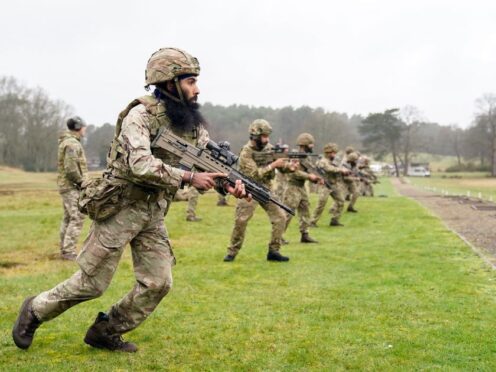
This summary of claims from the campaign trail has been compiled by Full Fact, the UK’s largest fact checking organisation working to find, expose and counter the harms of bad information, as part of the PA news agency’s Election Check 24.
Reform UK’s election ‘contract’
On Monday Reform UK published its election ‘contract’—essentially the party’s manifesto, though it argues the term ‘manifesto’ has been devalued and has avoided using it.
The contract claims there is “record crime”.
Crimes recorded by the police have increased in recent years, but the Office for National Statistics (ONS) says this isn’t the best data to understand overall trends—it’s affected by changes in levels of reporting to the police and police recording practices.
The ONS says the Crime Survey of England and Wales is a better indicator of long-term trends. It shows crime peaked in the mid-1990s and has been falling since.
Speaking at the contract’s launch, Reform UK leader Nigel Farage said Labour “launched their manifesto with their six key priorities, not even mentioning immigration”.
The word “immigration” isn’t in Labour’s six ‘first steps for change’, but the third step pledges to “Launch a Border Security Command”. Labour has also set out “five national missions”, none of which are related to immigration.
Reform UK’s contract also refers to “record NHS waiting lists”.
Assuming this relates to ‘referral to treatment’ data for England, which is what’s usually meant when people talk about ‘waiting lists’, the main NHS England waiting list peaked at around 7.77 million cases in September 2023 and has fallen slightly, but remains high at 7.57 million in April.
The size of the armed forces
The strength of the UK’s armed forces has been a topic which has featured a number of times in the election campaign—and indeed, it’s been in the spotlight ever since the outbreak of war in Europe two years ago.
There are a number of different ways to measure the number of personnel, however, which can make comparing the size of the armed forces, either historically or internationally, difficult.
There are currently just over 183,000 personnel in the UK’s armed forces, according to the most comprehensive measure of manpower.
This figure, which counts full-time trained and untrained service personnel in the Army, Royal Navy and Royal Air Force, is down by 3% on the year before.
There has been a sustained fall in numbers over the last couple of decades, with the number of fully-trained personnel down by about 32% since 2000.
One claim we’ve heard during the election campaign, including from Labour leader Sir Keir Starmer, is that the Army is now at its smallest size since the Napoleonic era.
This seems to be broadly correct, according to historic figures released by the Ministry of Defence, though there are some caveats around the data—for instance, the figures only count UK Army Regular Forces.

Enjoy the convenience of having The Sunday Post delivered as a digital ePaper straight to your smartphone, tablet or computer.
Subscribe for only £5.49 a month and enjoy all the benefits of the printed paper as a digital replica.
Subscribe